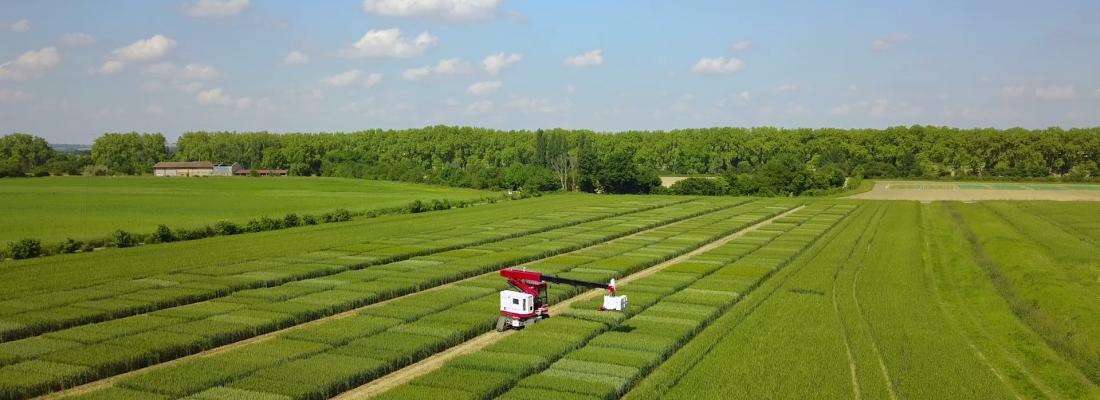Food, Global Health Reading time 2 min
INRAE Occitanie-Toulouse develops a one-of-a-kind robot for "scanning” crops in the field
Published on 20 September 2017

INRAE : a leader in field-based phenotyping
Phenotype studies examine all of an individual's observable traits. Here, the individuals are crop plants in a field. The limited speed of phenotyping technology is a major barrier in efforts to improve our understanding of plants. INRA is one of the world's leaders in high-throughput phenotyping research. Recently, the institute put its skills to use as part of a collaboration with two private companies (MECA 3D and Robopec) and developed the phenomobile, a phenotyping robot. This robot can carry out the automated characterisation of the traits of plants found in microparcels (which range from 8 to 20 m² in size, depending on the species). These parcels are part of an experimental facility and may number in the thousands.
Active sensors with a high level of spatial resolution
The robot is equipped with a 12-m telescopic arm fitted with an adjustable measurement probe. The probe has four sychronised cameras with five flashes, which means images can be acquired regardless of natural light conditions, yielding consistent data quality. The apparatus is also equipped with three scanning lasers (LIDAR).
An exceptional level of automation
The phenomobile is also unique because of its high level of automation. Its movements and those of its arm are controlled by RTK GPS (with centimeter-scale precision). Measurement regimes are automatically implemented at certain points along the trajectory of the phenomobile and its arm.
The challenge of treating the immense quantity of data collected
The different sensors make it possible to gather different descriptive information about crop plants, such as leaf surface area, the percentage of green leaves, leaf chlorophyll content, plant height, and the position and orientation of plant organs (e.g., stems, leaves, and ears). These data are rendered usable thanks to automated sequential analyses. The ultimate goal is to develop a system of analysis that is fast enough to keep up with the amount of data produced, given that the robot is measuring 150 to 200 microparcels per hour and producing 200 MB of data per microparcel. The data analysis employs techniques used in satellite remote sensing, image analysis, and point cloud processing.
Data useful to geneticists and modelers alike
The phenotypic traits are then associated with genetic information collected via genotyping tools. Subsequently, genes underlying traits of agricultural relevance, such as better drought tolerance, can be identified. The data can also be exploited to build and improve models of how crops function.
Field tests
Phenomobile is currently being tested in a small field trial focused on sunflower. This work will also allow data analysis strategies for this species to be improved before the robot is deployed in a wheat-focused trial that will begin in autumn 2017 and that will involve 1,000 parcels.
